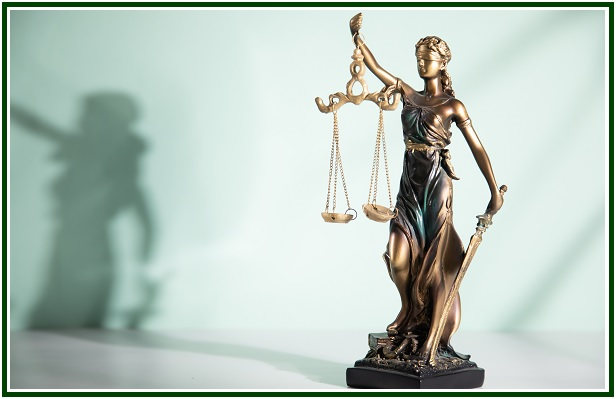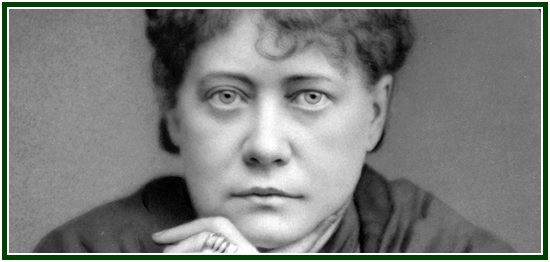
Dismantling Popular Illusions of a Modern Age
Carlos Cardoso Aveline

In the first solemn statement of his “Aphorisms on Karma”, Mr. William Q. Judge says:
“There is no Karma unless there is a being to make it or feel its effects.” [1]
The idea seems to be rather naïve, for Karma means Action. Its Law is omnipresent at any moment during both the “Days” and the “Nights” of the Universe, its manvantaras and pralayas.
The Laws of Newton are but aspects of the law of Karma. No apple can even fall from an apple tree except as a result of the law of Karma and in strict accordance with it.
On a smaller scale, no doubt, one could suppose that “there is no human, individual Karma, unless there is a human individual to make it or feel its effects”.
But even this is an illusion.
Long before an individual starts to “exist”, or to physically live, his Karma of past lives is there already, and at the right time it guides the process of conception and birth. Once the individual is born, he starts learning again from the very point at which the lessons of life and Karma stopped, in the previous incarnation. Karma is there everywhere, in all realms of Nature, all the time, even around and within any series of eternities.
One’s Karma – the record of one’s actions – never dies. It is never born. There is nothing lawless or truly “karmaless” in the universe or outside it.
Someone could still argue and say that a stone has no Karma. The idea seems to make sense. What Karma could a simple pebble have?
The fact is that every stone has the mineral Monad in it. As the Monad in the stone relates to that which surrounds it – the lower level realities – the monad shares the Karma of the Mineral world in the present (fourth) Round of Life in our globe. A heavy Karma, according to the theosophical teachings.
However, the Karmic conditions gathered around each aspect of the “mineral” Monad will make due progress according to the determinations of Karma. They will have the opportunity to change and evolve.
In the Mahatma Letters we see:
“‘As below so above’ – that is the universal system of correspondences – try to understand by analogy. Thus will you see that in this day on this present earth in every mineral, etc., there is such a [Universal] spirit. I will say more. Every grain of sand, every boulder or crag of granite, is that spirit crystallized or petrified.” [2]
The petrification of Universal Spirit in a stone is Karma, and is subjected to Karmic cycles. Karma is therefore far from narrowly limited to the world of short term personal matters in the human realm. There is no such thing as “absence of Karma”.
No one and nothing can escape the universal Law. The highest beings but humbly serve it. Every “karmalessness” is relative, limited, short-lived, karmically determined. Therefore “karmalessness” is a term easy to misuse.
In the first paragraph of the Letter 10 in the Mahatma Letters, the Master of the Wisdom defines esoteric philosophy as “preeminently the science of effects by their causes and of causes by their effects”. In other words, the master says that occult philosophy is the philosophy of Karma. [3]
Could the Monad be outside Karma?
In the classical book “Five Years of Theosophy”, page 274, upper half, one reads that the Mineral Monad is but one, and cannot be seen as fragmented.
On page 275 we see the atom referred to as the manifestation of the Monad in the mineral kingdom.
Still the Monad is subject to Karmic Law, which is demonstrated among many other evidences by the fact that “the tendency towards segregation into individual monads is gradual, and in the higher animals comes almost to the point”. (p. 275) [4]
It seems clear therefore that the absence of lower Karma cannot be seen as an absence of Karma. Far from that.
While Mahatmas and Dhyan Chohans do not have dense human Karma, they have their own higher level of Action and Reaction, which are regulated by the One Law. In their Letters, the Masters teach and demonstrate that their altruistic Action on spiritual realms is subject to the Dharma and Karma of the present age. One of them wrote that Mahatmas are “borne along on the mighty tide”. They “can only modify and direct some of its minor currents”.
He explained, and his words deserve calm contemplation:
“Periods of mental and moral light and darkness succeed each other, as day does night. The major and minor yugas must be accomplished according to the established order of things. And we, borne along on the mighty tide, can only modify and direct some of its minor currents. If we had the powers of the imaginary Personal God, and the universal and immutable laws were but toys to play with, then indeed might we have created conditions that would have turned this earth into an Arcadia for lofty souls. But having to deal with an immutable Law, being ourselves its creatures, we have had to do what we could and rest thankful. There have been times when ‘a considerable portion of enlightened minds’ were taught in our schools. Such times were in India, Persia, Egypt, Greece and Rome. But, as I remarked in a letter to Mr. Sinnett, the adept is the efflorescence of his age, and comparatively few ever appear in a single century. Earth is the battle ground of moral no less than of physical forces; and the boisterousness of animal passions under the stimulus of the rude energies of the lower group of etheric agents, always tends to quench spirituality.” [5]
The law of self-responsibility is the teaching of the Mahatmas.
The fancy of escaping from Karma or avoiding the consequences of one’s acts must be shown as conducive to unnecessary pain, both to oneself and others. The dangers of pseudotheosophy must be clarified and avoided. Moral education is of the essence in the ethical Art of sowing good Karma. One must sow before wishing to harvest.
NOTES:
[1] “Theosophical Articles”, by William Q. Judge, Theosophy Co., two volumes, see volume I, p. 120. Unfortunately, such a naiveté is not an isolated fact. In his article “Karma”, William directly contradicts the authentic teaching by saying: “Beyond the mind there is no action and therefore no Karma.” (Same volume, page 113.) And a few lines later, on the same paragraph, he even seems to give a receipt for those who would try to escape the Law: “For a man to be free from the effects of the Karma of any act he must have passed to a state no longer yielding a basis in which that act can inhere.” (Same volume, page 114.) It is easy to see that such false notions are not conducive to good Karma.
[2] Read “The Cosmic Creation in Every Foetus”.
[3] The letter is published as an independent article under the name of “Masters Teach That There Is No God”.
[4] “Five Years of Theosophy”, article “About the Mineral Monad”, pp. 273-278.
[5] “First Letter of K.H. to Hume”, November 1880, published at “Combined Chronology for Use With ‘The Mahatma Letters to A.P. Sinnett’ and ‘The Letters of H.P. Blavatsky to A.P. Sinnett’”, by Margaret Conger, TUP, Pasadena, California, USA, 1973, p. 35.
000
The above article was published in the associated websites on 30 June 2021. An initial, anonymous version of the text is part of the June 2021 edition of “The Aquarian Theosophist”, pp. 1-3.
000
Read more:
* “Annotations on Karma”.
000

Helena Blavatsky (photo) wrote these words: “Deserve, then desire”.
000